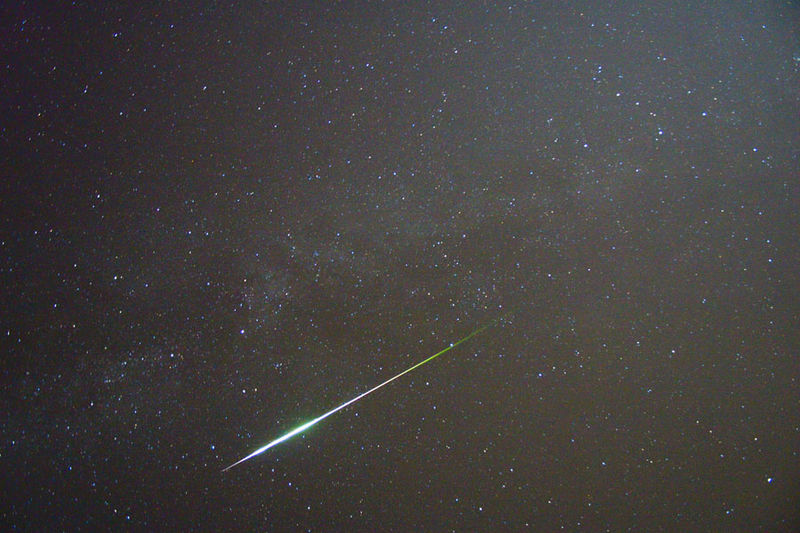Science News
Perseid Shower
August 11, 2013
by Bing Quock and Alyssa Keimach

This Sunday and Monday, Earth will be passing through the path of Comet Swift-Tuttle. This periodic comet approaches the Sun every 133 years and isn’t expected to come around again for more than a century, but Earth will encounter particles of dust lingering in the comet’s path.
When the comet’s frozen nucleus approaches the Sun, it heats up, and its outer layers of ice evaporate. This process releases dirt and dust embedded in the ice, and when this cosmic debris collides with Earth’s atmosphere at high speeds (up to 45 miles per second), it burns up, This causes the streak of light in the night sky that people sometimes refer to as a “shooting star.”
Shooting stars are properly called meteors, and meteor showers are named after the constellation from which the meteors seem to radiate. From an Earthly point of view, the current display appears to emanate from the constellation Perseus the Hero, so we call these meteors the Perseids.
Although the meteors are actually falling in parallel paths, their trajectories, if traced backward, appear to converge in the distance—in this case pointing backward to the stars of Perseus. This does not mean to look only toward that constellation, since the meteors can appear anywhere in the sky, so use your unaided eye to see the widest possible field of view. No telescope required!
The perfect time for this warm summer activity is the night of Sunday, August 11th, to the morning of Monday the 12th, and the night of Monday the 12th to the morning of Tuesday the 13th. Ideally, head out after midnight, because then you will be facing the direction Earth is moving, directly into the trail of comet dust. And this year, the sky will also be darker because the moon will have set. Finally, if possible, get away from light pollution.
Andrew Fraknoi, Academy Fellow and astronomy professor at Foothill College in Los Altos, California, offers professional viewing advice: “It’s more important to decide WHERE to watch them, than WHEN to watch them. The crucial issue is that meteors are faint, so you need a location where the sky is DARK. That means getting away from city and car lights as much as possible. The darker your site, the more you will see.”
If you’re an amateur astronomer, this shower will be one of the most rewarding of the year. While casual observers might see 4–6 meteors per hour on any given night, the Perseids can produce approximately 60–80 meteors per hour at their peak and generate the most fireballs (bright meteors) of any shower! To keep count of the meteors you see, and to be a part of NASA meteor research, download an app called Meteor Counter.
Fraknoi offers even more incentive. “Since comets are ‘left-overs’ from the early days of our solar system, you can tell yourself that each flash you see is the ‘last gasp’ of cosmic material that formed about five billion years ago.”
Earth is estimated to accumulate between 37,000–78,000 tons of this cosmic material, so head out with warm clothes, a blanket, or sleeping bag to check out nature’s fireworks in the sky.
For more info, check out these top 10 facts on the Perseids, read more about their history, peruse this blog post from our friends at Zerve, or watch Tom Hanks being hit by a meteor while talking about the Perseids on the Tonight Show a few years ago (about 10:53 in, with Turkish subtitles).
Image: Andreas Möller/Wikipedia